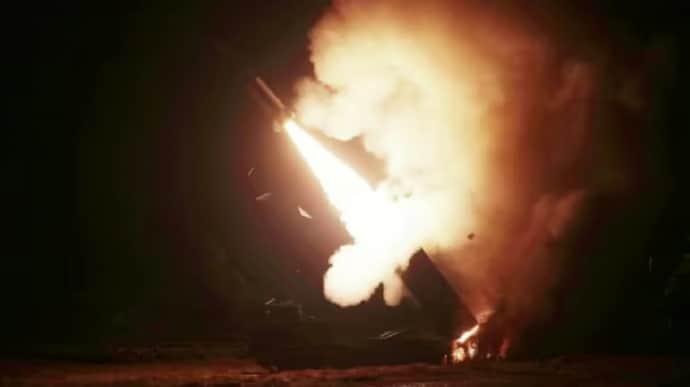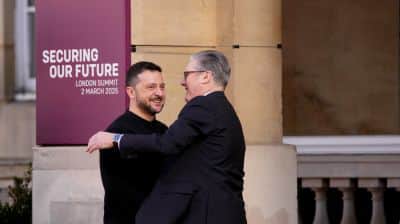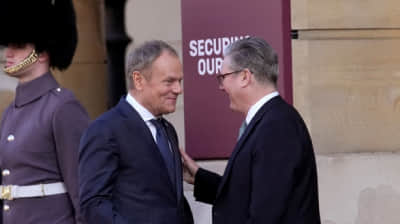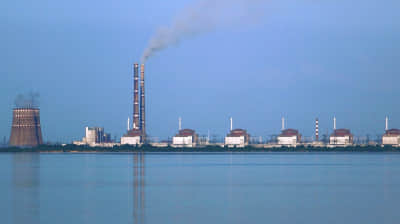Ability to strike at targets in Russia's rear is crucial for Ukraine – ISW

The West's permission to strike military targets in Russia's rear is crucial for weakening Russia's military potential in the war against Ukraine.
Source: Insitute for the Study of War (ISW)
Quote: "Ukrainian long-range strikes against Russian military targets within Russia’s rear are crucial for degrading Russian military capabilities throughout the theatre, and the lifting of restrictions on Ukraine's use of Western-provided weapons would allow Ukrainian forces to strike a wide range of significant targets undergirding Russia’s war effort."
The ISW assesses that Russia has at least 250 military and paramilitary targets within the range of the ATACMS missiles provided to Ukraine by the United States. Nevertheless, the United States is currently limitingUkrainian forces from utilising these missiles to strike military objectives inside Russia, restricting their use to US-supplied HIMARS air defence systems. As a result, Ukraine is able to target only 20 out of the 250 possible sites.
Additionally, only 17 of these 250 sites are airfields, and it is deemed unlikely that the Russian military has successfully redeployed assets from all of the other 233 sites.
Details: Analysts point out that US officials’ remarks concerning the redeployment of Russian air assets have largely disregarded the majority of sites within the ATACMS range that Ukrainian forces could target if US restrictions were lifted.
Among the 233 military and paramilitary sites within ATACMS range are major military bases, communication hubs, logistics centres, repair facilities, fuel storage, ammunition depots, and permanent headquarters – locations where quick redeployment or rapid enhancement of protection measures would be extremely difficult or even unfeasible.
Quote: "Any assessment that argues that there is no point in allowing Ukraine to strike targets in Russia on the exclusive basis of air asset redeployments is incomplete without also accounting for the hundreds of other facilities supporting Russia’s war against Ukraine and would thus be incorrect."
Details: The analysis highlights that Ukrainian forces do not need to strike every Russian military and paramilitary site within the range of Western-supplied weapons in order to begin applying significant operational pressure on the Russian military.
It is noted that the continued Ukrainian drone strikes on Russia's rear areas pose a threat to certain facilities, though not severe enough to compel the Russian military command to undertake a large-scale redistribution of logistics and support systems – a process that would be extremely disruptive.
The threat to Russia’s rear areas may also lead Russian military commanders to make strategic decisions about allocating their limited air defence and electronic warfare resources to safeguard a wider geographical area.
There is speculation that the Russian military might try to avoid such redeployments if Western restrictions are lifted, by heavily concentrating air defence and electronic warfare assets to protect military and paramilitary targets in the rear. However, there are questions as to whether the Russian military has sufficient air defence capabilities to achieve this.
Details: Experts underscore that recent successful Ukrainian strikes on Russian military targets within ATACMS range, using indigenously produced precision weapons, show that Ukraine possesses a striking capability that could be significantly enhanced if US restrictions were eased.
To the ISW's Key Takeaways on 24 August:
- Ukrainian long-range strikes against Russian military targets within Russia’s rear are crucial for degrading Russian military capabilities throughout the theatre, and the lifting of restrictions on Ukraine's use of Western-provided weapons would allow Ukrainian forces to strike a wide range of significant targets undergirding Russia’s war effort.
- An unnamed senior Biden administration national security official reportedly stated that Ukrainian strikes with Western-provided weapons against targets within Russia would not be effective because the Russian military has redeployed military aircraft from Russian airbases near Ukraine — but this assessment ignores how Russian forces are leveraging sanctuary space in deep rear areas within Russia for a wide array of infrastructure besides airfields to support military operations against Ukraine.
- The redeployment of Russian air assets from Russian air bases in range of ATACMS does not remove the utility of using ATACMS against other Russian military targets, however.
- Ukrainian forces do not have to strike every single Russian military and paramilitary object in Russia within range of Western-provided weapons to start generating significant operational pressures on the Russian military.
- Recent successful Ukrainian strikes against Russian military targets within ATACMS range with Ukraine’s own domestically produced precision weapons demonstrate that Ukraine still has a requirement to conduct strikes that lifting the US restrictions could help fill.
- Some US officials assess that the Russian military will likely need to redeploy significant forces from Ukraine and/or operational reserves to repel Ukrainian forces from Russian territory.
- Ukrainian forces continued offensive operations within their salient in Kursk Oblast on 24 August, and neither Russian nor Ukrainian forces made any significant claimed advances.
- Ukrainian President Volodymyr Zelenskyy commented on some of the objectives of the Ukrainian operation into Kursk Oblast on 24 August.
- Ukraine and Russia conducted their first prisoner of war (POW) exchange since the Ukrainian incursion into Kursk Oblast.
- Russian forces recently advanced near Toretsk and Pokrovsk.
- Kursk Oblast officials announced the creation of the BARS-Kursk volunteer detachment on 24 August and stated that the detachment will fight solely within Kursk Oblast.
Support UP or become our patron!





